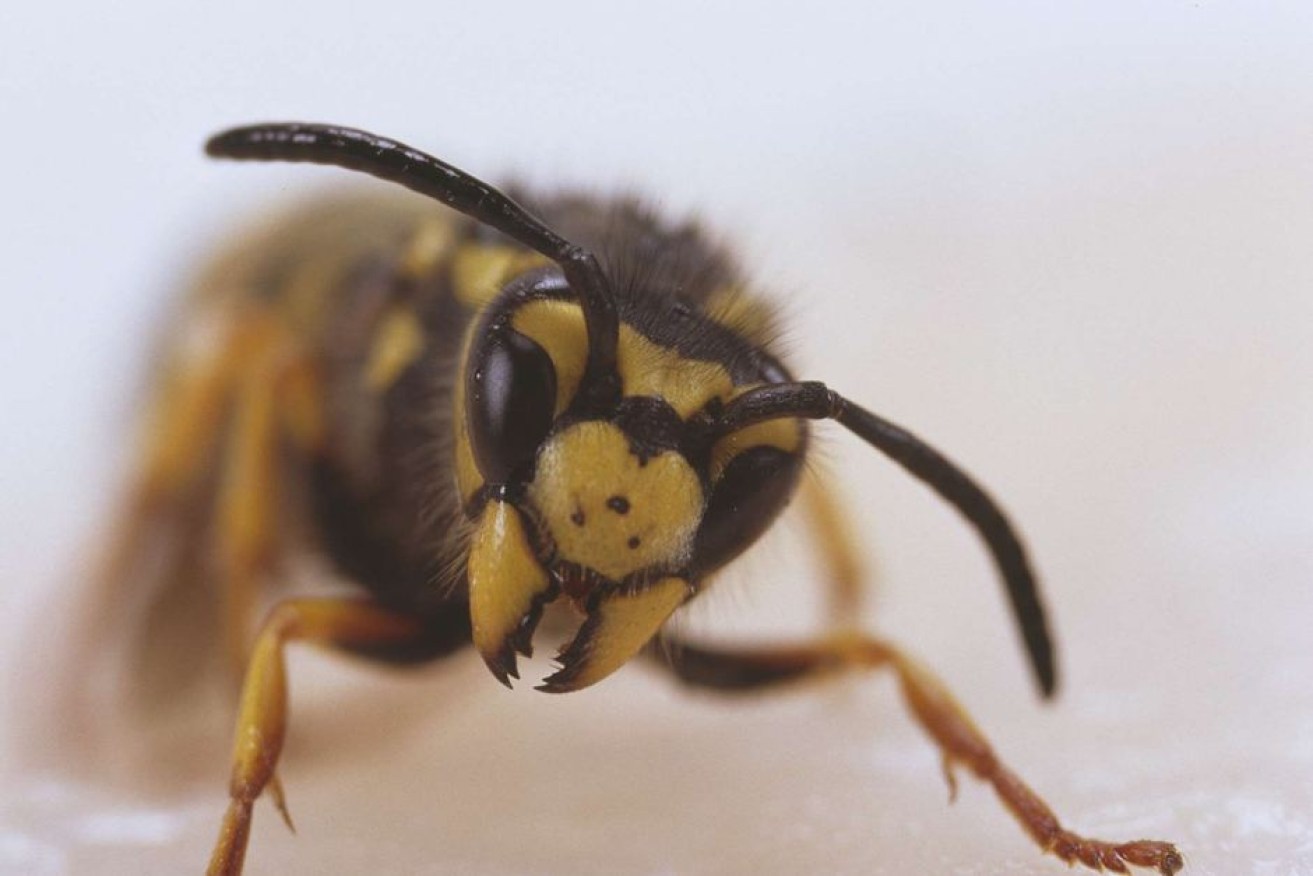‘Pressure is on’ to combat rising numbers of European wasps

The European wasp has the capacity to do huge environmental damage. Photo: Department of Agriculture and Food
Forty years ago an English entomologist visiting Western Australia spotted a European wasp when it landed on a scone he was about to eat.
He reported it and ever since the state’s Department of Agriculture and Food (DAFWA) has been waging war on this declared pest, whose numbers have risen alarmingly in recent years.
Marc Widmer, a senior technical officer with DAFWA, told ABC Radio Perth that generally the department destroyed about 30 European wasp nests a year, but in the past two years that number had risen to more than 80.
“The pressure is on,” he said.
“We have got to work smarter and we have to recruit more interested members of the public to keep an eye on them because I think it is going to get worse every year.”
Devastating for agriculture and environment
DAFWA believes European wasps enter WA when queens inadvertently make their way into shipping containers and cargo freight from the eastern states.
They can then go on to found nests that hold tens of thousands of wasps, 95 per cent of which have been found in metropolitan Perth.
Mr Widmer said they posed three distinct threats to the state – agricultural, environmental and to the general public.
“They destroy beehive nests, so the pollination and honey industry suffers,” he said.
“For the soft fruit industries, like grapes and stone fruit, they break the skin of the fruit so it rots on the vines.
“I have even seen them here in Perth killing chicks as they are coming out of eggs.
“Environmentally, you can have 10,000 to 20,000 wasps per hectare in the air at any one time.
“Imagine if they are all looking for food, they are predators and scavengers and they could just take all the food out of the ecosystem.”
For the general public, the wasps can kill domestic pets and make it simply too uncomfortable for people to be outdoors if they are present in large numbers.
In severe cases wasp stings can be fatal for humans.
Fighting back requires vigilance
WA is one of the few places in the world which has been able to prevent the European wasp from becoming widely established, but it requires constant vigilance.
“Our charter here at the Department of Agriculture … is to find every single nest that starts each season and knock it out before it matures and releases queens,” Mr Widmer said.
“It’s an ongoing battle of eradication every year.

European wasp nests can often contain several thousand wasps and are usually hidden. Photo: Adelaide Hills Council: Dennis Rainsford
European wasps look similar to yellow paper wasps and other natives but there are small differences to look out for.
“They are black and yellow insects like paper wasps, but the European wasp has black feelers and it doesn’t dangle two black legs when flying,” Mr Widmer explained.
Unlike native wasps, they also do not build visible nests.
“The nest is hidden, usually underground so you will just see an entrance with the wasps coming and going out of it,” he said.
“If you see them, don’t approach, give the department or your local government a call.”
Members of the public can also volunteer to adopt a trap in their backyard which monitors for European wasps in their area between December and May each year.
-ABC








